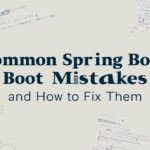JPA (Java Persistence API) simplifies database interactions in Java applications by mapping entities to relational tables. However, relationships like @OneToMany, @ManyToMany, and @OneToOne can be tricky to implement correctly. This guide breaks them down with practical examples, covering key annotations like mappedBy, cascade, and fetch.
1. @OneToMany: Parent-Child Relationship
Keywords: JPA @OneToMany, mappedBy, cascade types
When to Use
A @OneToMany relationship links one entity (e.g., Person) to multiple child entities (e.g., Address).
Example: Person and Address
@Entity
public class Person {
@Id
private int id;
@OneToMany(mappedBy = "person", cascade = CascadeType.ALL, fetch = FetchType.LAZY)
private List<Address> addresses;
}
@Entity
public class Address {
@Id
private int id;
@ManyToOne
@JoinColumn(name = "person_id") // Foreign key
private Person person;
}
Key Points
mappedBy: Specifies thatAddressowns the relationship.cascade: Propagates operations like save and delete.fetch:LAZYloading optimizes performance.
2. @ManyToMany: Bidirectional Association
Keywords: JPA @ManyToMany, join table, mappedBy
When to Use
A @ManyToMany relationship links two entities (e.g., Student and Course), where both can have multiple associations.
Example: Student and Course
@Entity
public class Student {
@Id
private int id;
@ManyToMany(cascade = CascadeType.ALL)
@JoinTable(
name = "student_course",
joinColumns = @JoinColumn(name = "student_id"),
inverseJoinColumns = @JoinColumn(name = "course_id")
)
private List<Course> courses;
}
@Entity
public class Course {
@Id
private int id;
@ManyToMany(mappedBy = "courses")
private List<Student> students;
}
Key Concepts
- Join Table:
student_coursestores foreign keys (student_id,course_id). mappedBy: Declares the inverse relationship.
3. @OneToOne: Exclusive Pairing
Keywords: JPA @OneToOne, bidirectional mapping, foreign key
When to Use
A @OneToOne relationship pairs one entity (e.g., Person) with exactly one other entity (e.g., Passport).
Example: Person and Passport
@Entity
public class Person {
@Id
private int id;
@OneToOne(mappedBy = "person", cascade = CascadeType.ALL)
private Passport passport;
}
@Entity
public class Passport {
@Id
private int id;
@OneToOne
@JoinColumn(name = "person_id")
private Person person;
}
Key Takeaways
- Foreign Key Placement:
Passportholdsperson_id. - Bidirectional Mapping:
mappedByavoids redundant columns.
JPA Relationship Best Practices
- Use
mappedByCorrectly: Prevents duplicate foreign keys. - Optimize Fetch Types: Use
LAZYfor large collections,EAGERfor critical one-to-one mappings. - Cascade Strategically:
CascadeType.ALLcan lead to unintended deletions.
FAQs: JPA Relationships
Q1: What’s the difference between @JoinColumn and @JoinTable?
@JoinColumn: Defines a foreign key in the same table.@JoinTable: Creates a third table for@ManyToManyrelationships.
Q2: When should I use @OneToMany vs @ManyToMany?
- Use
@OneToManyfor parent-child hierarchies (e.g., blog posts and comments). - Use
@ManyToManyfor mutual relationships (e.g., students and courses).
Q3: Why is mappedBy required?
It prevents JPA from creating duplicate foreign key columns.
Conclusion
Understanding JPA relationships is crucial for designing efficient database schemas. By mastering @OneToMany, @ManyToMany, and @OneToOne—along with annotations like mappedBy, cascade, and fetch—you’ll avoid common pitfalls and optimize data handling in Java applications.
Found this helpful? Share it with your team or bookmark this guide!
Optimization: Targets keywords like “JPA @ManyToMany example,” “mappedBy in JPA,” and “JPA relationships tutorial.” Structured with headers, code snippets, and FAQs for readability. Content is original, well-organized, and easy to follow.


